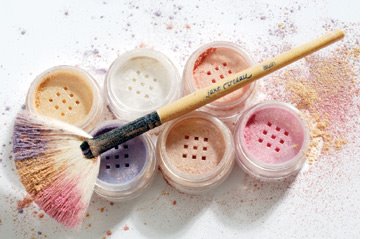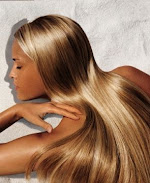How far are you willing to go to look young? The latest treatment employs collagen derived from circumcised foreskin. Here’s what you need to know. by Colette Bouchez -
by Colette Bouchez -
Heard the term “smooth as a baby’s behind “? Well that phrase might soon include another related part of the anatomy – at least if one group of anti-aging scientists have their way.
Indeed, hot on the heels of an FDA committee report questioning the safety of anti-aging wrinkle fillers, comes news of yet another hot new “injectable” wrinkle filling ingredient – this one derived from the foreskin of circumcised baby boys.
Developed by British biomedical firm InterCytex, the new injectable is known as Vavelta. According to the manufacturer the “ magic” in the foreskin is the proliferation of budding collagen cells known as “fibroblasts. These are “collagen sprouts” that ultimately help the body produce collagen – the natural substance that keeps skin looking smooth, firm and wrinkle-free.
The Magic Of Collagen
When we are young, our body produces a continued supply of fibroblasts – so new collagen is always being made. That’s why young skin looks smooth, firm, supple and wrinkle-free.
But as we grow older, the combination of the natural aging process, along with environmental exposures (like too much sun) reduce or damage the number of active fibroblasts able to churn out collagen.
The end result, we have less collagen available to “prop up” skin’s underlying support structure. Without that support, our facial contours begins to slowly droop and the loosened skin on top begins to wrinkle.
For a while, skin experts believed topically applied collagen suspended in creams and lotions was the key to keeping skin looking young. But it wasn’t long before medical science began to prove that the collagen we apply externally simply doesn’t get down deep enough into the layer of skin where our collagen cells reside.
The next idea was to fill the wrinkles with collagen – or another collagen-like material. That gave birth to the popular wrinkle filling injections we have today. The results were great – albeit most often temporary, with little to no stimulation of fibroblast formation.
But now, scientists at InterCytex say they have the best of both worlds with the new collagen injections derived from a baby’s foreskin.
Not only the does injection fill the depressed area ( a wrinkle or a scar) but the fibroblast cells in the injection itself help stimulate the body to begin manufacturing more of it’s own collagen.
The end result: A wrinkle injection that offers both immediate and long term results.
Currently there is some evidence that all wrinkle filling injections can, over time, stimulate some collagen production. There is also another permanent filler on the market that involves the use of micro sized Plexi-glass-like beads which, when injected into the wrinkle causes the body to rush wound-healing peptides and collagen to the area, creating a permanent fill.
That said, the science behind Vavelta suggests that because the stimulation provided by the fibroblast activity of the foreskin cells is closest to what the body does naturally when we are young - it could prove to be the most effective minimally invasive anti aging injection treatment to date.
The New Wrinkle Injections: A Caution
But before you go scouring the local birth registry looking for the fountain of youth, you should know that, while the company is aggressively seeking FDA approval for use in the US, at the moment, only a select group of British physicians are using Vavelta – and clinical trials are ongoing.
Moreover, so far, the main drawback to the treatment is not so much one of safety, but one of cost. Although mothers must approve the use of their baby’s foreskin for clinical treatment – and many do - it’s still said to be in short supply. And that, of course, pushes the cost of the injections far past those of other wrinkle fillers and probably closer to the cost of traditional plastic surgery.
On the flip side, if the results are, as the company claims, permanent, so one injection could go a long way in helping you look young for a long time. And do it without the risks associated with traditional plastic surgery.
What’s important to recognize, however, is that while the Vavelta “fill” for any one particular wrinkle may be permanent, the procedure itself does nothing to keep other wrinkles from forming. So unless you have special access to Peter Pan’s colony of Lost Boys, you could go bankrupt long before you achieve the look of eternal youth.
You might also be interested in reading:
Hope or Hype? Can You Really Look Younger ?
The Return of the Face Lift & Other Ways To Avoid Growing Old!
For more health and beauty news visit RedDressDiary.com - The Source for Fabulous Women Over 40!
Friday, November 21, 2008
Babies & Anti-Aging; A Curious New Link
Wednesday, November 12, 2008
Victoria's Real Secret: Bras May Be Toxic
 As reports begin surfacing nationwide concerning toxic skin reactions to a popular line of sexy lingerie, women need to be on the lookout for symptoms that could be more than just annoying. Here's what you need to know. -- by Colette Bouchez --
As reports begin surfacing nationwide concerning toxic skin reactions to a popular line of sexy lingerie, women need to be on the lookout for symptoms that could be more than just annoying. Here's what you need to know. -- by Colette Bouchez --
If you're thinking of boosting your sex appeal with a racy Victoria Secret bra there's something you should know: You just might end up with more attention than you bargained for.
The reason: Some women are reporting swollen, itchy, red, blistering breasts after wearing some styles from this popular lingerie line.
At least one of those women - 37 year old Ohio resident Victoria Ritter - is suing the sexy lingerie manufacturer for what she has described as " Welts...very red, hot to the touch, extremely inflamed, blistery", which she says itched profusely.
Yesterday Ritter told WABC TV News reporter Tappy Phillips she developed the rash after wearing the Angels Secret Embrace and Very Sexy Extreme Me Push-Up bras - two popular styles sold in Victoria Secret stores nationwide, in their mail order catalog, and at their website online.
But if you think Ritter's experience was an isolated one, guess again. The Internet is slowly filling up with similar claims from other Victoria Secret lingerie wearers nationwide - many of their stories detailed on the website MedHelp.com. All seem to describe a similar reaction - and similar symptoms - an issue which Ritter said she hopes will become the basis of a class action suit.
In fact, WABC News is reporting that the class action suit has already been filed, and it's waiting on a judge's decision, which is not expected until next May.
The Mysterious Toxic Lingerie Brew
While no one is certain what's causing the problem with the sexy bras, the Ohio law firm representing Ritter told WABC News they did their own testing and pinpointed the source of trouble as formaldehyde - a highly toxic chemical they say was found embedded in the cloth of the lingerie.
Ritter says her doctor diagnosed her rash as a type of allergy and that it could have been caused by exposure to this chemical.
While Victoria's Secret issued a statement saying they are investigating the problem and are sorry that " a small number of women" are having problems, they also deny in the statement any presence of formaldehyde in their bras.
That said, even if there was, it's not the eye-popping "gasp" you might think. Indeed, this nasty chemical initially developed to preserve lab specimens ( remember all those frogs you cut up in biology class - they were floating in formaldehyde) has been used as a preservative in some cosmetic and skin care products as well as being a component of many nail polishes.
Formaldehyde has also been used in the manufacture of certain permanent press fabrics, including some sheets and pillow cases - one reason why many companies suggest consumers wash bedding before sleeping on it.
Formaldehyde off-gassing is also a particularly nasty byproduct of some brands of MDF
(medium density fiberboard) - a building material frequently used in low-end "wood look" furniture, and is often a mainstay on popular do-it-yourself and home makeover shows. Tests show that formaldehyde fumes can emanate from some MDF products for up to three years - and that those fumes may be linked to an increase in asthma and other respiratory disorders, and possibly play a role in cancer.
I once bought a "fake wood" bookcase and ended up with burning eyes and skin just from being in the same room with the furniture for a few hours.
That said, I wouldn't be so quick to implicate formaldehyde as the main cause of the sexy bra rashes.
The reason? Medical literature is filled with similar sounding symptoms stemming from allergies caused by other chemicals used in the making of cloth - including cheap dyes. While I don't know if these particular bras were made outside of the United States, but if they were it's important to note that some countries don't have the kind of strict regulations regarding what can be used to color a fabric as we do here in the US.
There are also much less stringent guidelines regarding rinsing the fabrics after they are dyed- and some countries tend to skip this step altogether, leaving many items with a potentially toxic residue if worn without being washed first.
In fact, several years ago a good friend of mine developed a similar itchy, red rash body-wide that her doctor just couldn't seem to pin down. While we were chatting she mentioned she had recently purchased a brightly colored comforter cover made outside the US. I suggested it could be the cause of the rash- and when she ran it by her doctor, the mystery was solved.
Now whether or not formaldehyde, fabric dye or some other factor entirely turns out to be the culprit in the sexy lingerie caper, no one can say just yet.
At the same time, a rash is a rash is a rash - and an itch that you just can't scratch is anything but sexy, no matter how much your lingerie makes you look like Giselle or Lena or Heidi.
So what's a girl to do in the meantime? Well you could turn back the clock to our feminist days of the 1970's and simply go bra-less. ( Over 40? I wouldn't suggest it! )
Better idea: Switch over to good old Playtex for a while. It might not be worn by a gorgeous super model ...but trust me, your "girls" will never know the difference. And you won't itch.
You might also enjoy reading:
Sex, Menopause and Red Lace Bras
Old & Original Vs. New and Improved.
For more health and beauty news visit RedDressDiary.com - The source for fabulous women over 40!
Thursday, November 6, 2008
Studies: Reduce Blood Pressure-Cholesterol Naturally
With the cost of prescription medicines on the rise – and more people losing their health insurance – comes the good news that inexpensive natural treatments may help lower blood pressure and reduce the inflammation linked to heart disease. Here are the latest findings.
--By Colette Bouchez-- If you’re one of millions of Americans fighting high blood pressure and trying to stave off the threat of heart disease, the news this week is very encouraging.
If you’re one of millions of Americans fighting high blood pressure and trying to stave off the threat of heart disease, the news this week is very encouraging.
According to two separate studies published this week, both green tea and grapes may offer significant help in reducing not only blood pressure but also cholesterol - as well as controlling some of the inflammation linked to heart attack and even Alzheimer's disease.
In the case of green tea the “medical magic” is being attributed to polyphenols – natural compounds that appear to reduce inflammation in blood vessels which, if left unchecked, can not only raise blood pressure but also cause cholesterol to rise.
While green tea can contain up to 40% polyphenols, black tea usually contains between 3 and 10 percent.
The key compound in the grapes, say researchers, are flavonoids a type of antioxidant that also helps reduce inflammation.
“The things that we think are having an effect against the hypertension may be the flavonoids – either by direct antioxidant effects, by indirect effects on cell function, or both, “said researcher Steven Bolling from the University of Michigan where the grape research was conducted.
Although the study used concentrated grape powder, Bolling says the protective flavonoids can found in the fresh fruit as well, adding it is “ rich in all parts of the grape - skin, flesh and seed.”
Perhaps most interesting was that the grape compounds appeared to be most effective against high blood pressure in those who are salt sensitive.
Although this particular research was conducted on rodents, the researchers say there was clear evidence that a diet rich in the natural compounds found in grapes can reduce blood pressure associated with a high salt intake, helping to not only lower blood pressure, but improve heart health, reduce heart muscle damage and reduce inflammation that leads to hear disease. The research was published in the Journal of Gerontology: Biological Sciences.
Green Tea and Your Health
Similar to the Michigan study, the green tea study- just published in the journal Nutrition, also used a powdered supplement - this one made from natural extracts of green tea (Camellia sinensis). Here, a total of 125 men and women were randomly assigned to take a combination of two green tea supplements, or a placebo, once daily for 3 weeks.
At the end of the study, both total and LDL cholesterol decreased in all subjects by up to 10mg/dL, while blood pressure dropped on average of 5 points – all in just a matter of a few weeks.
Perhaps even more important, researchers documented a reduction in markers for oxidative stress - which some believe may be the early stages of heart disease - as well as a reduction of up to 42% of amyloid-alpha, another marker of chronic inflammation which may not only play a role in high blood pressure, but also brain degeneration including Alzheimer’s disease.
“Camellia sinensis compounds may be an option for people who have mild to moderate high blood pressure, elevated LDL cholesterol, elevated markers of inflammation, or a combination of these three CVD risk factors,” say the researchers who hailed from the University of Florida, Brigham and Women’s Hospital and Harvard Medical School in Boston, and the Nutritional Science Research Institute in Boston.
As such, they also suggest that before turning to prescription drugs, a trial of diet and exercise, including drinking green tea or using green tea supplements, may be enough to keep blood pressure and resulting inflammation under control.
What This Means To You:
While drinking green tea or adding grapes to your diet may not be all the help you need in reducing your high blood pressure and protecting your heart, adding them to your daily diet may help give your medication a boost – and help you build an arsenal of protection against the ravages of inflammation that can increase the risk of many diseases associated with advancing age.
If you have just begun to see to first stirrings of high blood pressure or high cholesterol – for example a pressure reading of between 120 and 135 or a slight rise in cholesterol , then don’t fool yourself into believing they won’t get any worse. They can and they probably will – unless you take some kind intervention to halt the process.
In that case, these two small dietary changes might be just what the doctor ordered!
You may also enjoy reading:
Yogurt is The New-Old Wonder Food
New Super Foods Reduce Diabetes - Improve Memory
Visit RedDressDiary.com : The Health and Beauty Destination for Fabulous Women Over 40!



































